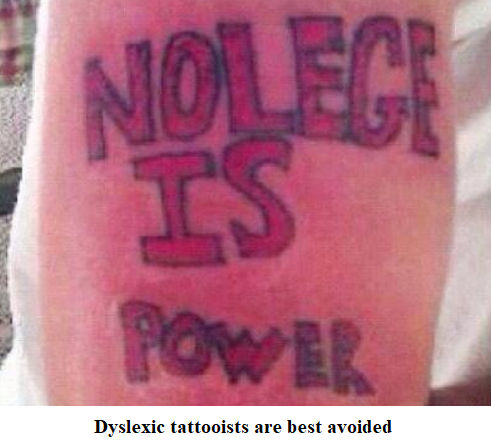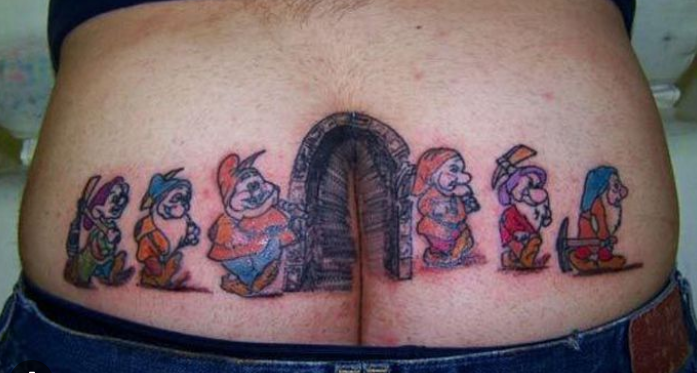
No Shortage of Shoulders to Crayon
Call me Isaac. Not for me the restless wanderings of an Ishmael, whether in the desert or on the sea (which is much the same thing). You won’t find me signing up to sail on a pegleg sea captain’s monomaniacal search for a white-headed whale, “with three holes punctured in his starboard fluke”—or, for that matter, on a two-week luxury cruise around New Zealand, drinks included. It’s just not worth it, what with all the cannibals about. The most celebrated literary cannibal of them all, Queequeg of Herman Melville’s Moby Dick, didn’t hesitate to leave his own comfortable South Seas island in search of adventure in distant lands, but then the homoerotic lead harpooner (harpoonist? Melville has it as “harpooneer”) of the Pequod feared neither the behemoths of the deserts nor the leviathans of the seas. Ishmael opined in Moby Dick that Queequeg looked like a man who “never had had a creditor”, like “George Washington, cannibalistically developed”. If that’s the sort of person who goes to sea, I’ll stay on land.
Queequeg is said to have been “on the whole a clean, comely-looking cannibal”—covered in tattoos from crown to soul. His arm (Melville doesn’t say which one) was “full of odd little parti-coloured squares and triangles … tattooed all over with an interminable Cretan labyrinth of a figure”. His other tattoos are described only as “unearthly”. Civilised men did not, in Melville’s time, sport tattoos, though Ishmael did at one point remark that he would rather “sleep with a sober cannibal than a drunken Christian”. In all 500-plus pages of Moby Dick, the only tattooed characters are the “many tattooed savages sailing in Nantucket ships” and one “white man—a whaleman too—who, falling among the cannibals, had been tattooed by them”. Even half a century later, Arthur Conan Doyle inserted only three tattooed characters into the complete canonical adventures of Sherlock Holmes: a sergeant of Marines with a blue anchor on the back of his hand, a red-headed pawnbroker who had been tattooed while travelling in China, and a felon sentenced to transportation to New South Wales.
These three, in nearly 1000 pages of detective stories! And Holmes had even written a monograph on the subject. Tattooing statistics for the nineteenth and early twentieth centuries are sorely lacking, but if these examples are anything to go by, landside tattoos must have been very rare indeed. Histories of tattooing claim that the first modern tattoo parlours were opened in New York in the 1870s and London in the 1880s, but it seems they mainly catered to military men, circus women, and the British nobility. The normalisation of tattoos didn’t come until the world wars (war has always been good for business), when mass enlistment made tattoos relatively commonplace among working-class soldiers and sailors. There they remained, until rebellious Baby Boomers tamed tattoos into middle-class fashion statements, the boys sporting forearm daggers and the girls offering peaks of butterflies on their backs. Maybe it was 1960s academic Marxism that made it de rigueur to be so déclassé. Or maybe it was Elvis.
As a point of fact, Elvis himself was not known to have any tattoos, but the “devilish tantalisation of the gods” (as Captain Ahab called it) by comfortably middle-class post-war Anglo-American youth certainly owes something to the Elvis phenomenon of the working-class man as middle-class idol. Competitive self-devaluation really is something new under the sun, the Book of Ecclesiastes notwithstanding, but it doesn’t seem to be wholly a Marxist phenomenon. Was it Karl Marx or rock-and-roll that turned the world’s youth onto greased hair, leather jackets and blue suede shoes? Was it Soviet propaganda or The Wild One that made biker gangs cool? (Sorry, Australians, but “bikie” gangs will never sound cool.) Was it the oppression of the working class that led Jerry Lee Lewis to erupt in great balls of fire? Did Frankie Valli read Friedrich Engels in graduate school?
In the 1961 hit single “The Wanderer”, the American doo-wop star turned rock-and-roller DiMucci brags that he has Flo on his left, Mary on his right, and Janie is the girl that he’ll be with tonight. Should Janie unwisely ask which one he loves the best, he vows to “tear open my shirt I got Rosie on my chest”. This is evidence, if evidence is needed, that by the time the Baby Boomers hit their teenage years, tattoos were cool. Blue-collar beats had buried the big band, and the new bad boys on the block brandished body art on their burly breasts. Granted, the movie directors and record producers who promoted the new teen culture were all communists, but the money men are always communists. Dion himself claims to have been a lifelong Republican.
Moreover, the Philistine is reliably informed that the Rosie inked on the Wanderer’s chest was not, in fact, Rosa Luxembourg. In an interview with Germany’s Der Spiegel magazine, Dion explained:
The “Wanderer” really existed. The guy’s name was Jackie Burns, he was a seaman and was fully tattooed, which was a rarity at the time. When he strolled through the area, he mostly wore undershirts, so you could see his tattoos, the names of his lovers, “Flo”, “Marie”, and “Rosie” on the chest. That’s exactly how I wrote it. I secretly admired the guy, he was really worth a song. Maybe I would have liked to have been this cool too.
So there you have it: from South Seas cannibals, through the merchant marine, to impressionable middle-class teens, most of them female. Yes, female. The Australian market research firm McCrindle reports that women now wear tattoos at twice the rate of men, and in the United States, the most popular tattoo search by far is for butterflies. Janis Joplin started the trend in 1970 by having an elaborate bracelet tattooed on her left wrist—and a cute little heart on her chest. She was dead within a year, aged twenty-seven. Not an auspicious beginning, perhaps, but tragedy is the crucible of legends.
 McCrindle reports that “our latest study [sic] shows one in four Australians has a tattoo”, but this implies that up to half of Australians of tattooing age may have tattoos, half of them too old to show them and the other half too young to know any better. For as Keats surely meant to write, “youth is beauty, beauty youth”, and that’s all you need to know. The tramp stamp (Merriam-Webster dictionary: “informal and sometimes disparaging—a tattoo located on a woman’s lower back”) will always look suggestive on a twenty-something yoga instructor; the shoulder skull will always look fearsome on a twenty-something muscle-head. At forty or fifty, not so much. Tattoos were better suited to a time when the average life expectancy was thirty-eight. People don’t age well, but tattoos age even worse.
McCrindle reports that “our latest study [sic] shows one in four Australians has a tattoo”, but this implies that up to half of Australians of tattooing age may have tattoos, half of them too old to show them and the other half too young to know any better. For as Keats surely meant to write, “youth is beauty, beauty youth”, and that’s all you need to know. The tramp stamp (Merriam-Webster dictionary: “informal and sometimes disparaging—a tattoo located on a woman’s lower back”) will always look suggestive on a twenty-something yoga instructor; the shoulder skull will always look fearsome on a twenty-something muscle-head. At forty or fifty, not so much. Tattoos were better suited to a time when the average life expectancy was thirty-eight. People don’t age well, but tattoos age even worse.
The astringent Quadrant columnist Anthony Daniels, who characterises tattoos as “the graffiti of the skin”, claims to have “tried in vain to find a publication … that dares to suggest that this self-adornment or mutilation is anything other than a serious art form”. Rest easy, sweet prince. Tattoos may be the most mobile of art forms, but they are hardly the most serious. Tattoos are tasteless, frivolous, self-indulgent and generally ugly, and rapidly depreciate over time. Good-looking people can carry off a tattoo, but a tattoo never makes anyone look better. A tattoo is at best a conversation-starter: Is that your only tattoo? How old were you when you got it? Are those your ex’s initials? It is at worst a deal-breaker: Do you have any other tattoos I should know about? That’s the same tattoo my mother has! Those are your ex’s initials.
In 2021, an attractive young Sydney influencer hit the clickbait news all over the world with her Ted Bundy and Jeffrey Dahmer tattoos (right leg, mid-thigh to upper ankle, Bundy on top), inked complete with representative quotations from the respective bards. Today she is an edtech entrepreneur, and she wears a concealing white turtleneck on her LinkedIn profile. Quadrant wishes her well, and recommends that she change her name and start a new life in Argentina. Unlike other art, once you buy a tattoo, you can never sell it. The best you can do is cover it, grow hair over it, or smudge it out. The complete lack of saleability may be what most distinguishes tattoos from real art: as Banksy has shown, even graffiti has a secondary market. Tattoos were only ever saleable among cannibals, and even then the proceeds didn’t accrue to the original owner. These days, no one wants your old tattoo. Likely not even you.
Madam: Archbishop Fisher (July-August 2024) does not resist the attacks on his church by the political, social or scientific atheists and those who insist on not being told what to do.
Aug 29 2024
6 mins
To claim Aborigines have the world's oldest continuous culture is to misunderstand the meaning of culture, which continuously changes over time and location. For a culture not to change over time would be a reproach and certainly not a cause for celebration, for it would indicate that there had been no capacity to adapt. Clearly this has not been the case
Aug 20 2024
23 mins
A friend and longtime supporter of Quadrant, Clive James sent us a poem in 2010, which we published in our December issue. Like the Taronga Park Aquarium he recalls in its 'mocked-up sandstone cave' it's not to be forgotten
Aug 16 2024
2 mins








